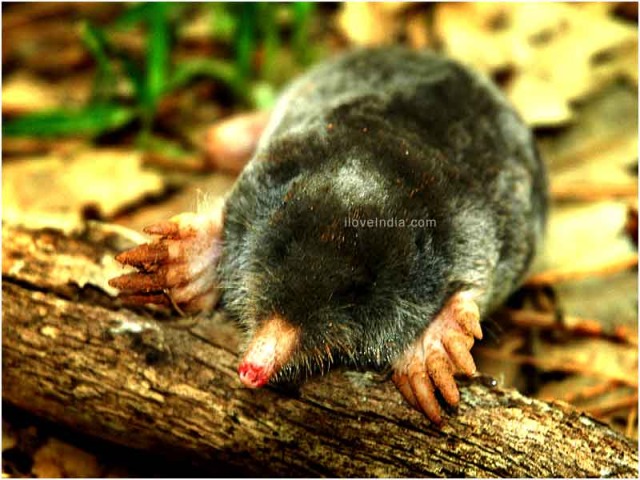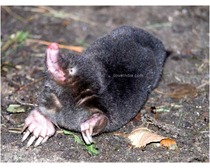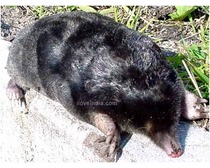Moles are small insectivorous mammals found in most parts of the world, barring a few. Explore the article to know some interesting facts and amazing information on moles.
Facts About Mole
Moles are small insectivorous mammals, belonging to the Talpidae family. They have a cylindrical body covered with fur. Their eyes are small, roofed with their fur and their ears are not visible. Moles are to be found in North America, Africa, Europe and most parts of the world, with the exception of Ireland. These small animals burrow the ground, but some mole species are also known to be semi-aquatic. In some parts of the world, local burrowing animals resembling moles are found. Golden mole of Southern Africa and the marsupial mole of Western Australia are some of the major local moles. Though average lifespan of moles is around 4 years but certain species of the moles have been found to live for 6-7 years. If you want to know more about moles, go through the following article and find some more interesting facts and amazing information about them.

Fast Facts
Kingdom: Animalia
Phylum: Chordata
Class: Mammalia
Order: Soricomorpha
Family: Talpidae
Genus: 12 genera
Height: 95-180mm
Weight: 65-120g
Average Lifespan: 3 years
Diet: Small Invertebrates & earthworms
Habitat: Grassy fields, meadows, pastures, lawns and forest floors
Gestation Period: 30 Days
Number of Offspring: 2-7
Interesting & Amazing Information On Moles
- The saliva of moles contains a toxin that paralyzes earthworms and as such, they are able to store their living prey for later consumption. For the purpose of storage, moles construct underground ‘larders’, where they store the paralyzed earthworms.
- Moles are active animals and their activity continues throughout the day. They dig their tunnels all the time and continuously search for food. A mole can die of starvation, if it doesn’t eat in every few hours.
- A mole can almost do a somersault by running through its tunnels and turning right around when it wants. The velvety fur of moles can move backward and forward, so that the animal doesn’t get stuck in the tunnels, when it squeezes its body through them.
- Moles have very tiny eyes, but sight doesn’t have much value for these animals as they live in the dark most of the time. They do not have a good sense of smell or hearing. However, moles are very sensitive to touch and vibrations.
- Though moles venture out mostly at night, they are vulnerable to predators. Tawny and barn owls feed upon moles even as many other mammals find them distasteful.
- When mole babies are born, they are naked and without fur. Their fur starts growing when they are 2 weeks old and their eyes open when they are around 3 weeks old. The babies grow quickly and are ready to leave nest by the time they are 35 days old.
- Every mole has its own burrow system, consisting of a network of firm-walled tunnels. The width of the tunnels is 5 cm, height is 4 cm and their length can be over 70 m. Though the territories of several moles may overlap, the residents usually avoid each other, except in the breeding season.
- In some countries, moles are considered to be agricultural pests. They contaminate silage with soil particles, which makes it inedible for the livestock. Conversely, they are a protected species in Germany. However, it is possible to kill them after obtaining a permit from the German authorities.
- One of the key characteristics of the star-nosed mole is that it can fetch and eat food at a faster pace than the human eye can follow.
- A male mole is called a ‘boar, a female mole is called a ‘sows’ and a group of moles is termed as a ‘labour’.
- The moles are eaten at many places, but their meat is not known to very tasteful.
- Though, the mole and the hedgehog were previously put in the same order Insectivora, but later it was established that there exists no monophyletic connection between them.
- While roaming on the ground, the moles often fall prey to reptiles, mammals and bird because of their small size.


See also
More from iloveindia.com
- Home Remedies | Ayurveda | Vastu | Yoga | Feng Shui | Tattoos | Fitness | Garden | Nutrition | Parenting | Bikes | Cars | Baby Care | Indian Weddings | Festivals | Party ideas | Horoscope 2015 | Pets | Finance | Figures of Speech | Hotels in India : Delhi | Hyderabad | Chennai | Mumbai | Kolkata | Bangalore | Ahmedabad | Jaipur
- Contact Us Careers Disclaimer Privacy Policy Advertise With Us Lifestyle Sitemap Copyright iloveindia.com. All Rights Reserved.



